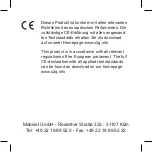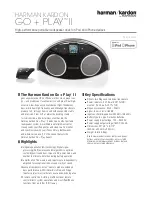
6
AW4-LS-BR & AW6-LS-BR Product Manual
WIRING INFO - 70V/100V OPERATION
Important
Because outdoor loudspeakers often have buried speaker cable, please make
certain to fully test an entire system and make sure that all wiring, speakers,
volume level, etc. meets your desired needs before filling in any trenching or
covering any speaker cable or wiring connections.
Note: Unlike traditional residential audio, 70V/100V systems are typically run
in mono sound so that only a single two-conductor wire run is necessary for
the speakers. If you want to use multiple wire runs for zoning speakers or
other purposes, each 2-conductor wire needs to be independently run back to
its own amplifier or amplifier terminals if using a multi-channel amplifier.
With your amplifier power disconnected:
1. At each speaker location, cut the loop of wire at the speaker location
2. Strip 1 to 2 inches (2.5 to 5 cm) off the end of the cable jacket. Then strip
½-inch (1.3 cm) of insulation off each wire.
3. Twist the wire strands together so there are no strands separated from the
bundle.
4. Connect the wires to the speaker terminals, being sure to observe proper
polarity. For standard speaker cable with red and black wires, connect both
red wires (the red wire coming from the 70V/100V connection on the amplifier
or the previous speaker if there was one AND the red wire going to the next
speaker if there is an additional speaker) to the red positive (+) terminal and
both black wires (the black wire coming from the COM connection of the
70V/100V amplifier or the previous speaker if there was one AND the black
wire going to the next speaker if there is an additional speaker) to the black
negative (–) terminal.
Note: Some speaker cables may have other ways of designating polarity. Cable
with a clear jacket has a copper-colored wire for positive and a silver-colored
wire for negative. In a cable with white and black wires, the white is positive
(70V or 100V) and the black is negative (COM). Cable with both wires the same
color may have grooves, ribs, or stripes on the positive wire to identify it.
5. Check to make sure there are no stray strands of wire outside the terminals. If
there are, remove the wire, twist the strands together, and reconnect the wire
to the terminal.
6. At the final loudspeaker, the only wires connected will be the ones coming
from the previous loudspeaker (or from the amplifier if there is only one
speaker in the system).






























